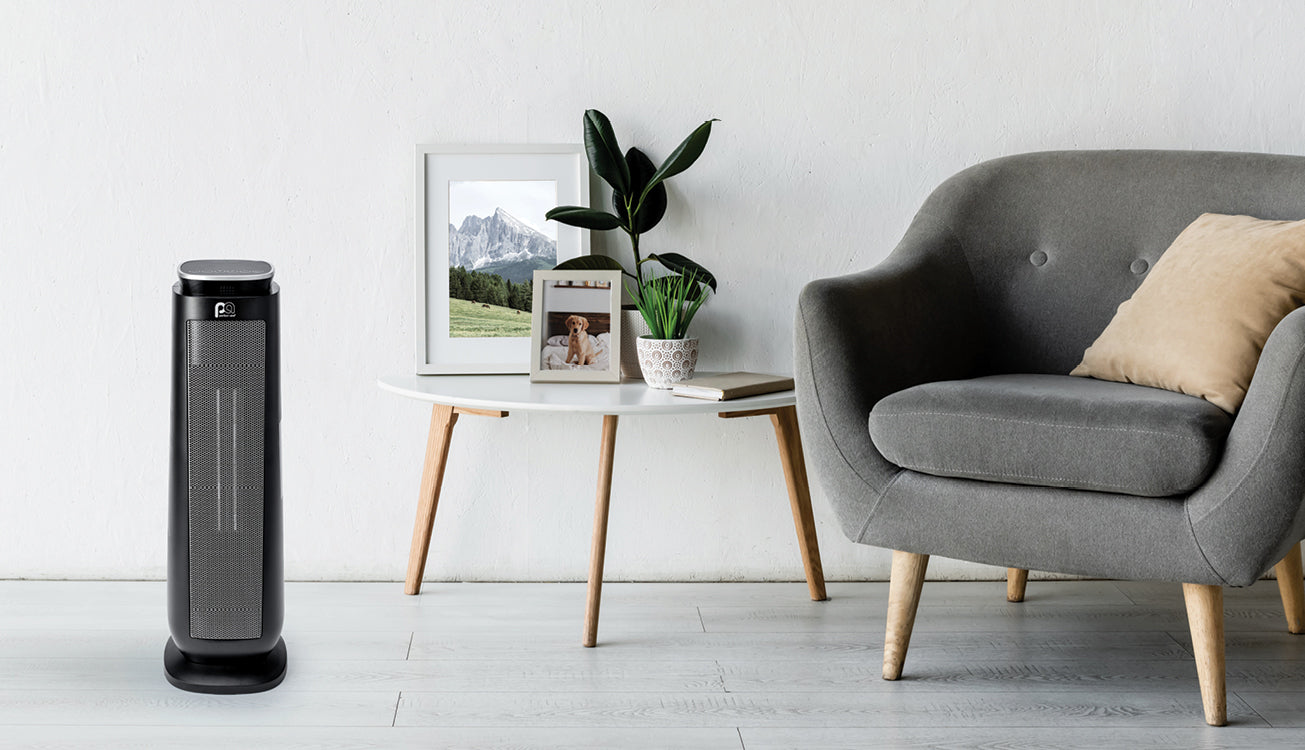
Space Heater Guide: How to Choose a Space Heater
Feeling a little extra chilly these days? Central heating just not cutting it? It might be time to consider a space heater.
Space heaters can be used for a variety of reasons, from needing a little extra heat to warming a space that just doesn’t get heated properly.
Regardless of heater type, when buying a space heater, you should consider built-in safety features to ensure your unit can operate safely for years to come, like automatic shut-off, overheat protection, and tip-over switches.
Here are our tips to help guide you through finding the perfect space heater for your needs:
Heater Types
Space heaters normally come in 5 types, all of which heat, but are used in different circumstances and for different needs. When choosing a heater, it’s important to align your needs with the right type of heater:
Fan-Forced
Fan-forced heaters are a very common type of space heater that uses an internal fan to spread warmth around a room or space. These types of heaters are great for adding immediate heat and moving warm air across larger distances (think whole room heat). As these heaters need a fan for heating, these types of heaters can be a bit noisy and may draw more energy, costing more to operate.
Ceramic
Ceramic heaters are another very common type of heater that uses a ceramic heating element and fan to heat and push out warm air. Ceramic heaters offer energy-efficient, consistent, and quiet heating for smaller spaces or a whole room. They come in a variety of styles like compact, baseboard, and tower, to meet the style needs of almost anybody. Not to mention, these heaters are typically safer for families as they are usually quick to cool down and cooler to the touch.
Infrared
Infrared heaters use invisible light, like the sun, to emit rays that are then absorbed by surrounding items or people, increasing temperatures surrounding the heater. Infrared heaters are great for immediate heat (think: coming inside from sledding) and are fairly quiet when in use. These heaters can become hot to the touch; because of this, they are not recommended for use around children.
Convection
Convection heaters circulate convection currents throughout the heater body and across a heating element (oil, electric coil, electric wire) to create gradual, even heat for an entire room or area. Convection heaters come in a variety of styles, from baseboard and compact to wall-mounts. They are especially great for long-term, economical heating for rooms or spaces that need extra heat throughout the day.
Oil-Filled
Oil-filled heaters use an electrical heating element to heat oil held within a thermal reservoir, which is then circulated throughout the heater’s panel or fins, slowly transferring heat to the surrounding area. Oil-filled heaters are great for larger spaces, or for supplemental heating in a single zone. While oil-filled heaters are silent and efficient, they do not offer fast heat — the oil takes a while to heat up.
Heater Styles
Space heaters typically come in 4 styles: compact, baseboard, tower, and wall & ceiling mounts. Review the chart below to determine the best heater style for your needs:
| Style | Best For |
| Compact |
|
| Baseboard |
|
| Tower |
|
| Wall & Ceiling-Mount |
|
Heater Capacities
Depending on what you want to use the heater for, and how big of a space that is, you will need to determine what capacity of heater is needed to adequately heat. Please keep in mind that buying a heater that is too large can run up your electric bill, and a heater too small may not adequately heat a space.
A good rule to follow when looking for a heater is 10 watts per every square foot of floor space in a standard room. For instance, a 1,500-watt heater would be great for a 150 sq. ft. space. These distances can increase if the heater is only being used for supplemental heating.
Poor insulation, tall or vaulted ceilings, and the number of windows and doors in a space may affect the performance of your heater. Consider increasing wattage to accommodate these factors.
| Wattage | Estimated Coverage |
| 750 | 75 sq. ft. |
| 1,000 | 100 sq. ft. |
| 1,250 | 125 sq. ft. |
| 1,500 | 150 sq. ft. |
| 2,000 | 200 sq. ft. |
| 2,500 | 250 sq. ft. |
| 3,000 | 300 sq. ft. |
| 3,500 | 350 sq. ft. |
| 4,000 | 400 sq. ft. |
| 4,500 | 450 sq. ft. |
Other Considerations
Safety
Many heaters will have built-in safety features, the most common are overheat protection, auto shut-off, and tip-over switches. Most heaters will have at least one of these features if not all. When buying, make sure your heater was built with safety in mind.
Bathroom-Friendly Options
Space heaters can be made for specific places such as bathrooms and garages. If using your space heater in the bathroom, make sure that it has built-in safety features for damp environments, like an ALCI plug that can protect against electric shock.
Portability
Are you looking to move your heater from one space to another? If so, consider finding a heater with wheels to help in transportation, or choose a lightweight, compact heater that is easy to move around.
Housing/ Heater Body
Consider looking for a heater with a cool-touch body or a ceramic heater, especially if your family has children, as these units will not get too hot on the outside and are typically “ok” to touch during operation.
NOTE: Heaters should always be supervised during operation and kept out of reach of children and pets.
Energy Efficiency
Heaters typically have high wattage that can increase energy consumption over time. When buying, look for heaters with ECO or energy-efficient modes that help the heater operate more efficiently — saving you money!
